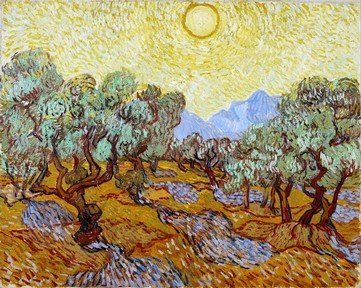Quiz Answer Key and Fun Facts
1. "Café Terrace at Night", one of Vincent Van Gogh's most recognizable paintings, was painted on location outside a real cafe in which French city located in Provence?
2. "A Sunday Afternoon on the Island of La Grande Jatte" by Georges Seurat, which depicts a scene on the titular French island on the River Seine, pioneered the use of what painting technique?
3. This vibrant painting by Henri de Toulouse-Lautrec, notable for its vibrant colors, depicts a scene from what famous cabaret in the Montmartre district of Paris?
4. "View of Toledo" is a dramatic painting of a landscape in the titular city in Spain by Doménikos Theotokópoulos, a Greek painter considered the architect of the Spanish Renaissance, who is better known by what name?
5. This painting, which depicts the house of a farmer named Willy Lott, was painted by which British artist, a major figure of the turn-of-the-19th-century Romantic movement who is known for his arresting landscapes?
6. "Mont Sainte-Victoire with Large Pine" is one of a series of paintings depicting a mountain overlooking the artist's home in Aix-en-Provence in southern France. Who was this highly influential artist, considered the founder of post-impressionism?
7. This painting, "Chalk Cliffs on Rügen" by Caspar David Friedrich, depicts a view from a large island and national park in what country?
8. "Bridge over a Pond of Water Lilies" is one of a series of paintings by French impressionist Claude Monet of his own gardens at his home in Giverny, France. A common motif in these paintings, including the one shown here, is the green bridge, built in the style of what culture?
9. "The Little Street" depicts a scene in the Dutch town of Delft, which was home to what seventeenth century Dutch Baroque Period painter, who is particularly famous for "Girl with a Pearl Earring"?
10. This striking 1875 painting by Edouard Manet depicts a scene in which European city famous for its Grand Canal?
Source: Author
agentofchaos
This quiz was reviewed by FunTrivia editor
looney_tunes before going online.
Any errors found in FunTrivia content are routinely corrected through our feedback system.
